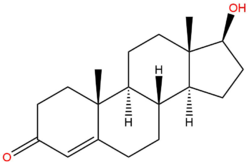Talk:Anabolic steroids
This article is a stub. As such, it may contain incomplete or wrong information. You can help by expanding it. |
This page has not been fully approved by the PsychonautWiki administrators. It may contain incorrect information, particularly with respect to dosage, duration, subjective effects, toxicity and other risks. It may also not meet PW style and grammar standards. |
Anabolic steroids (also known as anabolic-androgenic steroids, AAS or simply steroids) refers to any kind of drug which has a structure and effects similar to that of testosterone. Anabolic steroids are mainly used medicinally for the treatment of various conditions including appetite suppression caused by cancer or AIDS, testosterone deficiency or growth failure. However, they have also been used illicitly as powerful performance enhancers which work by increasing muscle mass drastically.
Pharmacology
 |
This pharmacology section is incomplete. You can help by adding to it. |
Anabolic steroids work by increasing protein production while also blocking the effects of the stress hormone cortisol on muscle tissue so that catabolism of muscle is greatly reduced. It has been hypothesized that this reduction in muscle breakdown may occur through anabolic steroids inhibiting the action of other steroid hormones called glucocorticoids that promote the breakdown of muscles.[1]
Examples
| Name | Structure |
|---|---|
| Testosterone | 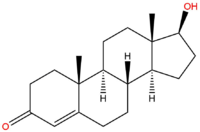
|
| Methyltestosterone | 
|
| Ethyltestosterone | 
|
| Dihydrotestosterone | 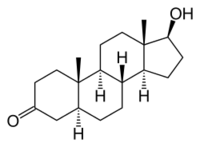
|
| Metandienone (Dianabol) | 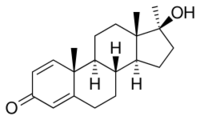
|
| Boldenone | 
|
| Clostebol | 
|
| Drostanolone | 
|
| Mesterolone | 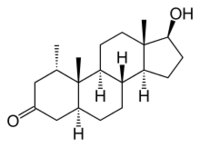
|
| Dimethandrolone | 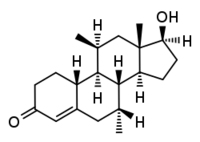
|
| Nandrolone | 
|
| Ethisterone | 
|
See also
External links
References
- ↑ Glucocorticoid antagonism by exercise and androgenic-anabolic steroids. | https://www.ncbi.nlm.nih.gov/pubmed/2199753
